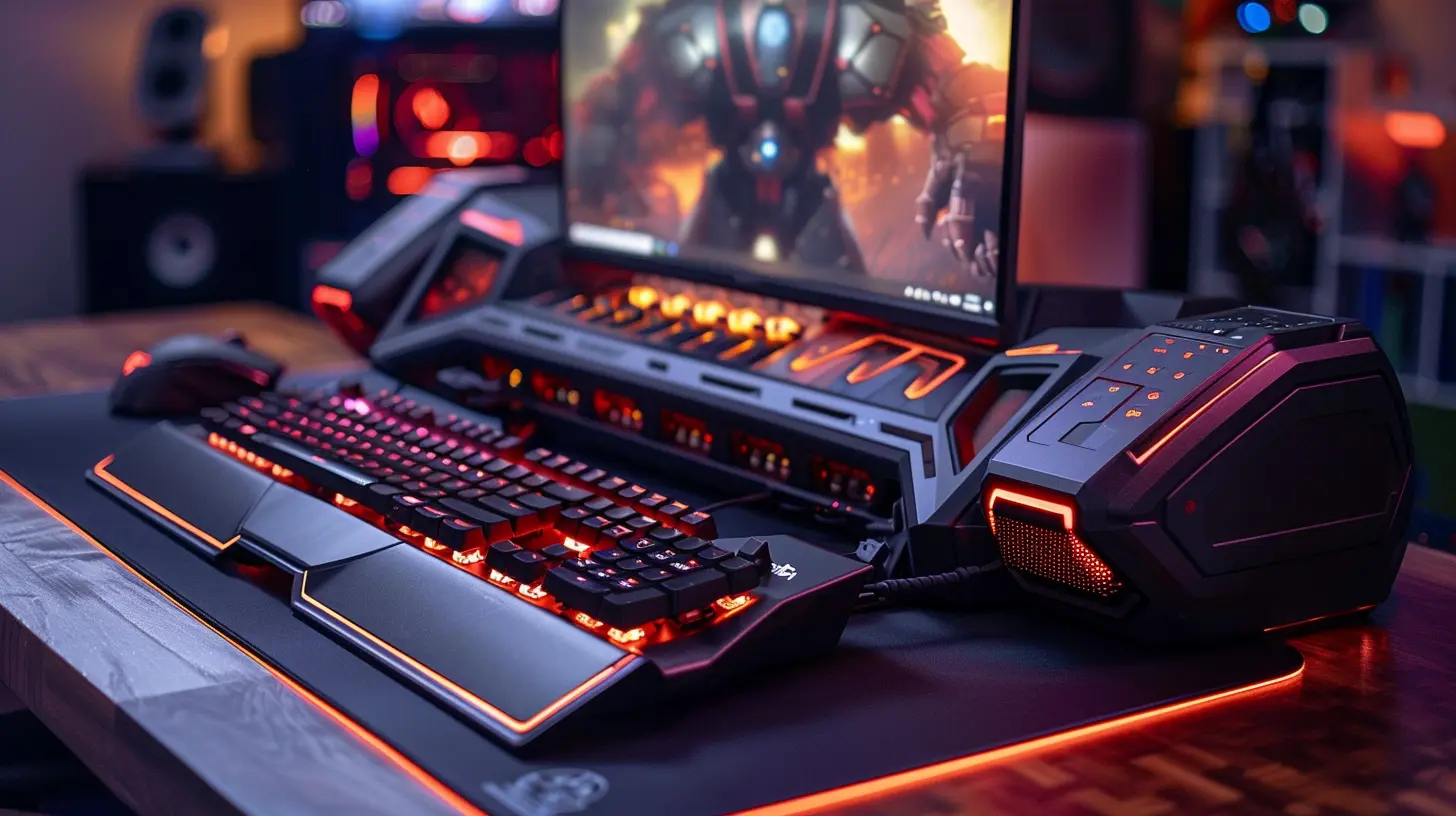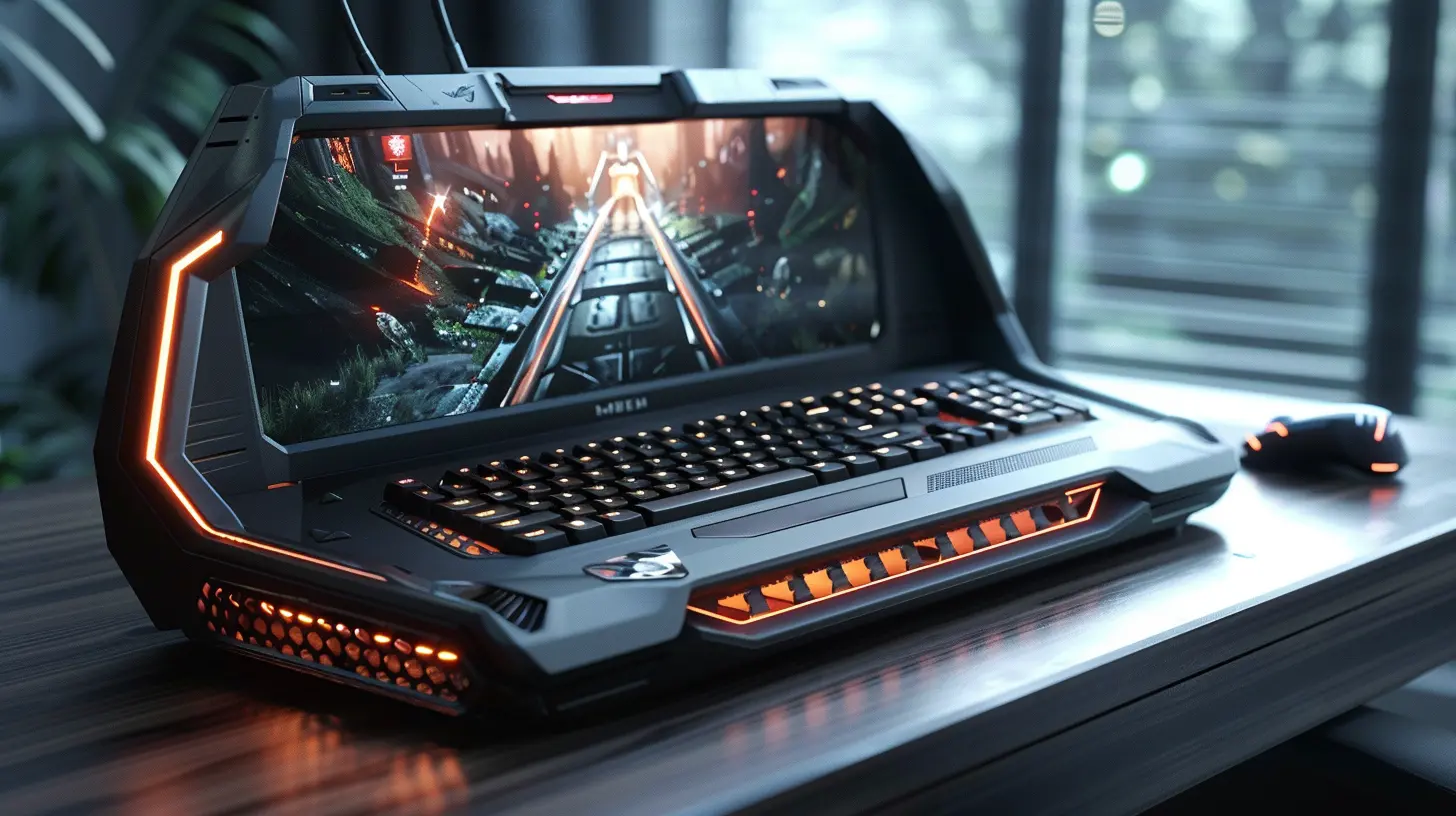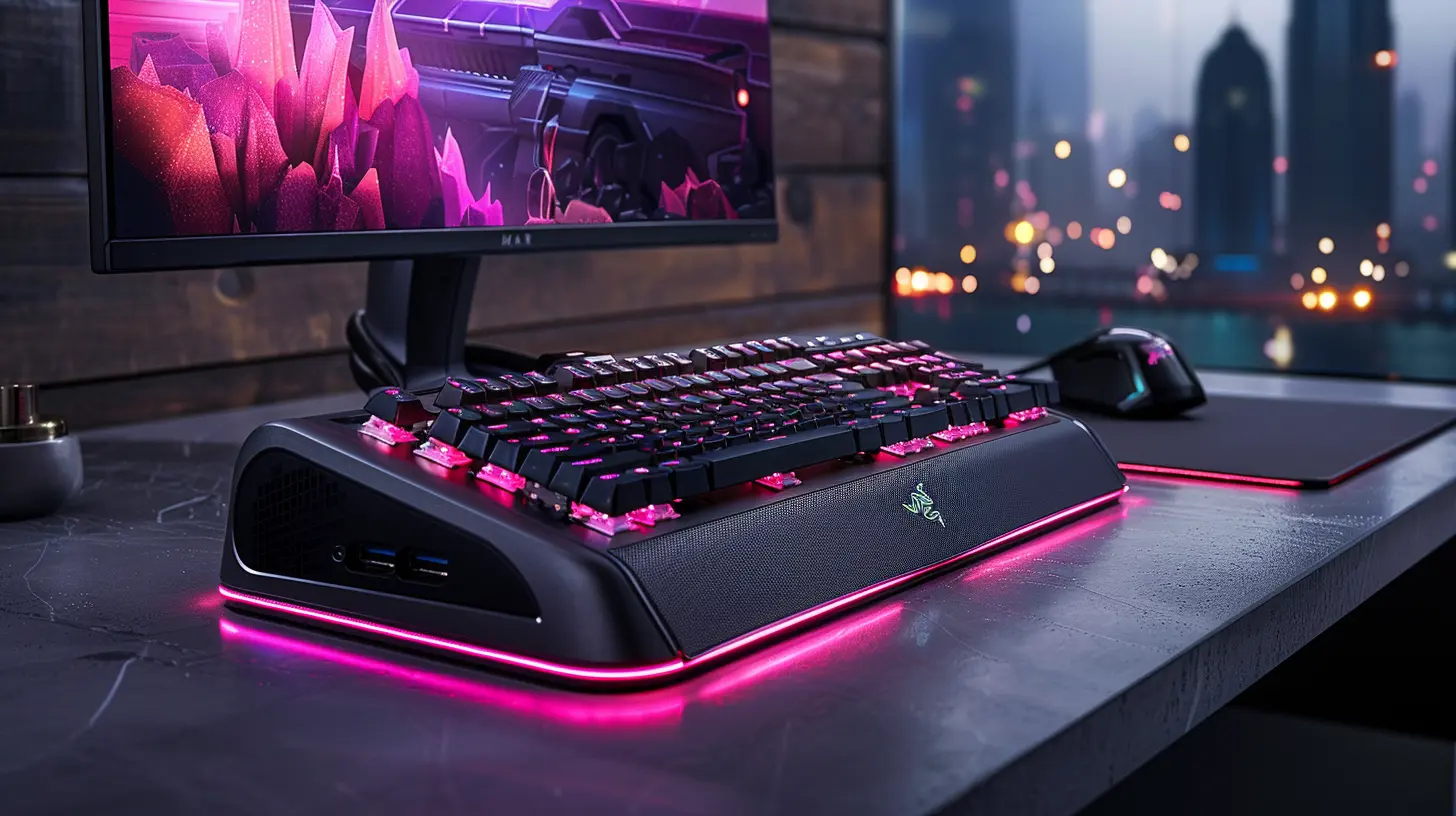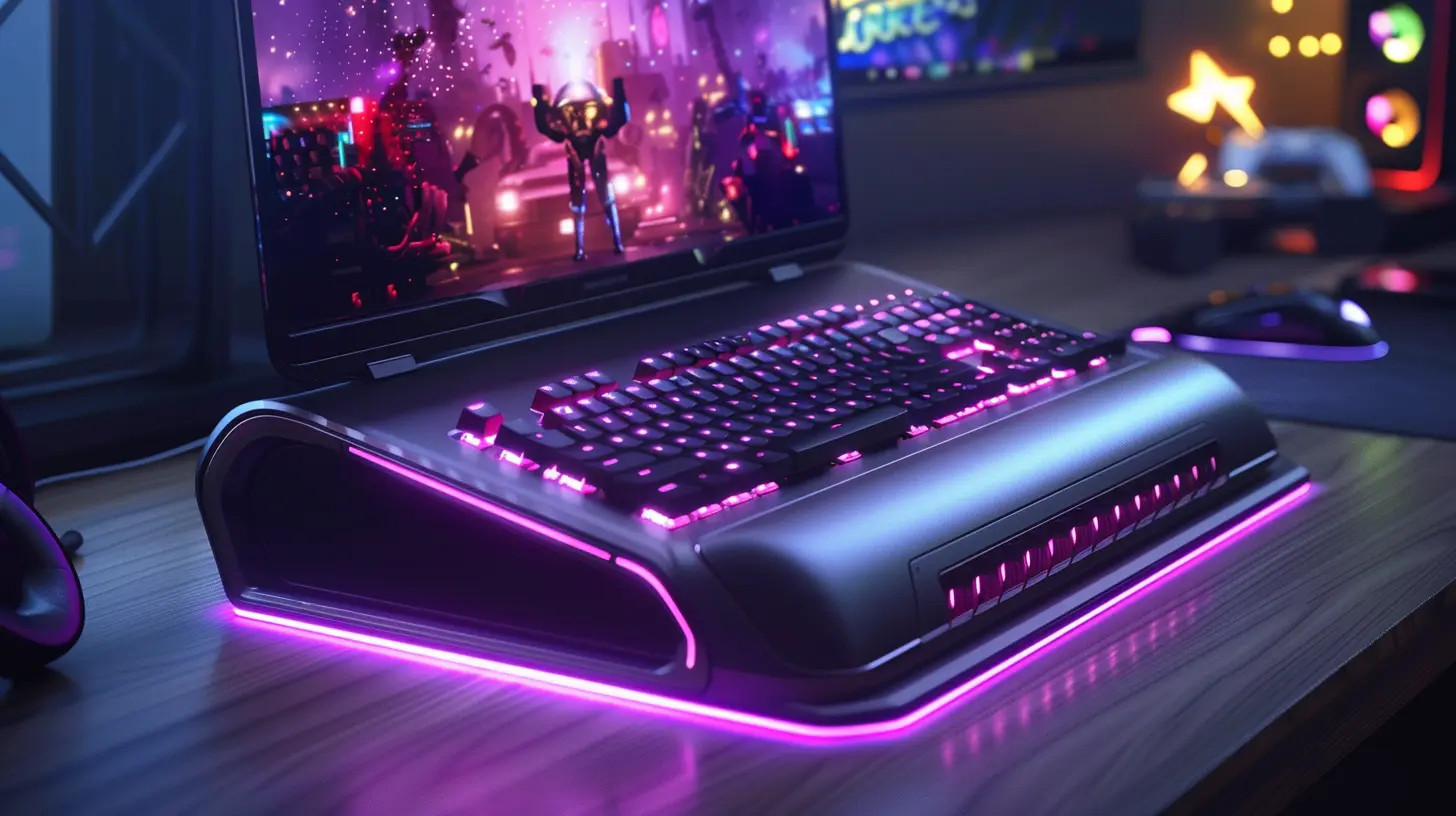Can This Docking Station Turn Your Laptop into a Gaming Beast?
5 June 2025
Tired of your laptop wheezing like a 90s office PC every time you launch a game? You're not alone. Gaming on a laptop has always been a balancing act—performance vs portability, power vs battery life. But what if I told you there's a way to feed your laptop some serious firepower without selling your soul for a pricey gaming rig? Yep, we’re talking about docking stations. Not just any docking station, though—the type that can genuinely transform your humble laptop into an all-out gaming beast.
Sounds too good to be true? Let’s break it down.
🎮 What Even Is a Docking Station?
Let’s start simple.A docking station is basically a hub. Think of it like a power booster you plug your laptop into. It gives you extra ports, more connectivity, the ability to hook up external displays, and, in some cases, crazy-good performance enhancements. Some advanced docking stations even allow for external GPU (eGPU) connections—we’ll get to that juicy part in a bit.
Most people use docks so they can turn their laptop into more of a workstation—perfect for productivity. But gamers? We want more. We want frames, high refresh rates, ray tracing, and zero lag. That’s where gaming-focused docking stations step up.
🔥 The eGPU Revolution – A Gamer’s Dream?
If docking stations were superheroes, eGPU docks would be the secret weapon.An eGPU docking station lets you plug a desktop-class graphics card into your laptop. Suddenly, your modest little ultrabook with integrated graphics has the power of an RTX 3080 or an RX 6950 XT. It's kind of like strapping a rocket to a bicycle. Insane, right?
Here’s how it works:
- You slide your beefy desktop GPU into the eGPU enclosure.
- Connect the enclosure to your laptop via Thunderbolt 3 or 4 (you NEED a compatible port).
- Install the drivers.
- Boom! Your laptop now taps into that raw GPU muscle.
This setup offloads the processing behind all those high-end textures, lighting, and frame-by-frame rendering to the external card. So while your laptop handles the brains, the eGPU focuses on brawn.
🧠 Wait—Does Your Laptop Even Lift?
Before you start adding things to your shopping cart, hit the brakes. Not every laptop can handle an eGPU docking station.Here’s the checklist:
- Thunderbolt 3 or 4 port: This is non-negotiable. USB-C is not Thunderbolt (watch out!).
- The right CPU: A strong GPU is awesome, but if your processor’s lagging behind, you’ll bottleneck performance.
- No hardware lockouts: Some manufacturers lock Thunderbolt bandwidth or block external GPU support in BIOS. Always double-check.
If your device checks all the boxes, congrats—you’re ready to unlock gaming mode.
🧩 The Real Performance Gains – Worth the Hype?
Let’s talk numbers. You’re probably wondering, “Okay, it sounds cool, but how much of a difference are we talking here?”Say you’re on a laptop with an integrated Intel Iris Xe GPU (decent for day-to-day stuff but not ideal for gaming). Plug in a dock with a high-end RTX 3070? You’ll see FPS skyrocket from 20-30 up to 100+ on titles like Apex Legends, Warzone, or Cyberpunk 2077.
Even mid-tier GPUs like the GTX 1660 Super will give you a massive leap over onboard graphics or lower-tier mobile GPUs.
It’s not just about frame rates either:
- Higher resolutions (1440p or even 4K)
- Ultra settings instead of Medium or Low
- Better thermals (the GPU is in the dock, not inside your laptop)
- Less strain on your laptop’s hardware
That’s a night-and-day difference in gameplay, visuals, and overall immersion.
🔌 Setup: Easy or a Tech Headache?
It’s a mixed bag, honestly.If you’re a plug-and-play kind of person, you might hit a few bumps early on. Most eGPU docking stations aren’t exactly Apple-simple and may require driver installations, firmware updates, or BIOS tweaks. But once you're over that hump? It’s smooth sailing.
Here’s a basic setup process:
1. Plug in your GPU into the docking unit.
2. Connect to your laptop via Thunderbolt.
3. Install necessary drivers from NVIDIA or AMD.
4. Reboot, and verify your GPU is active.
5. Launch your game and smile like a kid on Christmas.
You might also want to invest in:
- An external monitor (to get the full performance, route the display from the dock)
- Extra cooling (your laptop may still run hot under load)
- A quality PSU for the dock (especially if using high-wattage GPUs)
But overall, if you can hook up a console, you can handle this.
⚙️ Best Docking Stations for Gaming (2024 Picks)
Ready to shop? Here are some of the top-rated eGPU-compatible docks that gamers swear by:1. Razer Core X
- Supports full-sized GPUs- Compatible with Windows and macOS
- Sleek, gamer-friendly design
- Easy to set up
2. Akitio Node Titan
- Thunderbolt 3 support- Portable and lightweight
- Clean aluminum shell
- Ideal for mid-tier GPUs
3. Sonnet eGFX Breakaway Box
- Excellent cooling- Supports 1000W PSUs (perfect for power-hungry cards)
- Affordable compared to Razer
These docks all unlock beast mode in different flavors. Pick one based on your GPU needs, budget, and laptop compatibility.
💰 Is It Worth the Money?
Let’s do a little math.An external GPU dock + used RTX 3060 + some cables = around $600.
Compare that to a gaming laptop with similar performance? That’s $1,200+ easy.
And here's the catch—you already own the laptop. Instead of replacing it, you’re upgrading it. Not to mention, if you ever build a desktop, you can keep the card. Think of it like LEGO for your tech.
So is it worth it? Heck yes, if:
- Your laptop meets the tech specs
- You're into multi-tasking (game + stream + work)
- You want desktop-level gaming without losing laptop flexibility
👾 Who Is This For?
eGPU docking stations aren’t for everyone. So let’s clarify.Ideal For:
- College students on a budget wanting gaming performance- Creative pros who game after hours
- Frequent travelers who don't want to lug a desktop
- Existing laptop users looking for a cost-effective boost
Not Ideal For:
- Laptops with no Thunderbolt ports- People seeking ultra-portable gaming solutions
- Hardcore competitive gamers needing the lowest latency
If you're someone who wants the best of both worlds—portability and performance—this setup hits the sweet spot.
⚠️ Watch Out for These Pitfalls
Before you go all-in, here are some quick warnings:- Bandwidth loss: Even with Thunderbolt, expect some performance shaving compared to a desktop.
- Driver conflicts: Switching between internal and external GPUs can be glitchy.
- Power limits: Your laptop may not charge from the dock. Keep that AC adapter handy!
- Cost creep: It starts affordable—but you'll be tempted to upgrade everything.
🎯 Final Verdict: Beast Mode Activated?
Let’s cut to the chase.Can a docking station turn your laptop into a gaming beast?
Absolutely.
With the right setup, an eGPU docking station gives you desktop-level gaming power without ditching your laptop. You get smoother gameplay, better visuals, and the flexibility to work on the go and game like a champ from home.
It’s not plug-and-pray magic—it takes a bit of tech love to get it going. But once you’ve tasted the performance boost, you’ll never look at your “old” laptop the same way again.
So if you’ve got the itch to crank your FPS and toss your settings slider to “Ultra,” maybe it’s time to give your laptop the sidekick it deserves.
Because in the world of gaming, power is everything—and this dock might just be your gateway to greatness.
all images in this post were generated using AI tools
Category:
Hardware ReviewsAuthor:

Pascal Jennings
Discussion
rate this article
3 comments
Fern Sawyer
Turning your laptop into a gaming beast? Sounds like a tech fairy tale! Just sprinkle some dock magic, and let the gaming adventures unfold—unicorns not included!
June 10, 2025 at 4:57 PM

Pascal Jennings
Thanks for the fun comment! With the right dock, your laptop can indeed become a gaming powerhouse—no fairy tale needed!
Emily Marks
Great insights! Excited to see how well the docking station enhances gaming performance.
June 9, 2025 at 4:11 PM

Pascal Jennings
Thank you! We're excited too—let's see the performance boost in action!
Cooper Phillips
This is fascinating! I’ve always wondered how accessories can elevate a laptop’s performance. Can a docking station truly enhance gaming capabilities, or is it just marketing hype? I’m curious about the specific features that make this device stand out!
June 7, 2025 at 3:27 AM

Pascal Jennings
Thanks for your interest! A docking station primarily enhances connectivity and can improve cooling and power delivery, indirectly benefiting gaming performance. Features like multiple display outputs, USB ports, and better ventilation make it more than just marketing hype!



